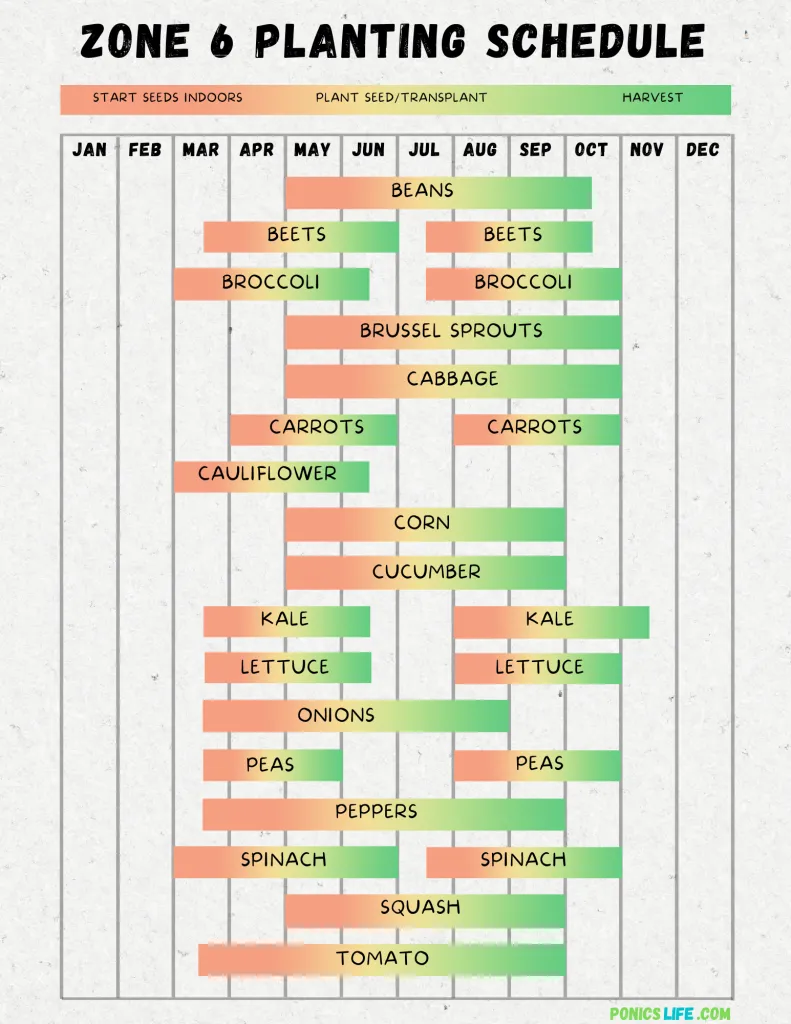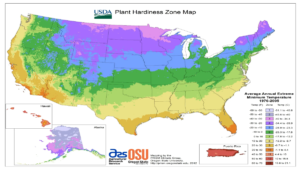Zone 6 gardening made easy! Learn what to plant, when to start seeds, and tips for a thriving garden in this comprehensive guide.
Introduction: Zone 6
Zone 6 is a term that can be interpreted in various ways depending on the context, ranging from gardening hardiness zones to geographical areas in cities. This blog post delves into the different meanings of Zone 6, focusing primarily on its significance in the United States for gardeners and climate understanding. We’ll explore what Zone 6 means for your gardening plans, how it compares to other zones, and its implications in other fields.
Hardiness zone
Geographic area defined by average annual minimum temperature for plant survival
| Definition | A geographic area characterized by a specific range of average annual minimum temperatures, crucial for the survival of many plant species. |
| Primary Purpose | Serves as a rough guide for landscaping and gardening, indicating the lowest temperatures that various plants can withstand. |
| Original System Creator | Developed by the United States Department of Agriculture (USDA). |
What Does Zone 6 Mean in Different Contexts?
Gardening and Plant Hardiness
In the realm of gardening, Zone 6 refers to a specific climate zone on the USDA Plant Hardiness Zone Map. This zone is characterized by its average annual minimum temperature, which ranges from -10 to 0 degrees Fahrenheit (-23 to -18 degrees Celsius). This classification helps gardeners and landscapers determine which plants are most likely to thrive in their area’s climate.
Key Characteristics of Gardening in Zone 6
- Last Frost Date: Around May 1st
- First Frost Date: Around November 1st
- Growing Season: Approximately 150-180 days, allowing for a wide variety of plants including vegetables, flowers, and shrubs to be grown.
Geographical and Cultural References
- Urban Areas: In some urban contexts, such as Atlanta, Zone 6 can refer to a specific part of the city known for its unique cultural and social attributes.
- Sports and Community: In sports or group dynamics, Zone 6 can symbolize a mental or strategic area, such as the endzone in football or a metaphorical zone where team members aim to achieve their best performance.
Climate Implications of Zone 6
Comparison with Other Zones
Zone 6 is warmer than Zone 5 and colder than Zone 7, making it a moderate climate zone suitable for a diverse range of plants. It is crucial for gardeners to understand these differences to optimize their planting strategies and ensure successful cultivation.
Impact on Gardening and Agriculture
Understanding the climate characteristics of Zone 6 can significantly influence gardening activities, including when to start seeds and which plants to choose. For instance, starting seeds for summer vegetables should ideally begin indoors around March to April, allowing them to be ready for transplant following the last frost.

What are the characteristics of zone 6 climate?
The characteristics of Zone 6 climate, as mentioned in the provided sources, are as follows:
- Climate Type: Semi-arid.
- Temperature Range in July: Between 26°C and 42°C.
- Temperature Range in January: Between 7°C and 22°C.
- Average Annual Rainfall: Between 70 cm and 125 cm.
What are the best plants to grow in zone 6?
The best plants to grow in Zone 6, as indicated by the search results, include a variety of perennials, shrubs, and annuals that are well-suited to the climate conditions of this zone. Here are some of the top choices:
Perennials
- Hosta – Known for their lush foliage and shade tolerance.
- Daylilies (Hemerocallis spp.) – Appreciated for their vibrant blooms and low maintenance.
- Astilbe (Astilbe Japonica) – Thrives in shade and requires moist soil.
- Echinacea (Smooth Purple Coneflower) – Known for its medicinal properties and drought resistance.
- Heuchera – Offers beautiful foliage and is suitable for borders or mass plantings.
Shrubs
- Boxwood (Buxus spp.) – Popular for hedges and topiaries due to its dense, evergreen foliage.
- Rose of Sharon (Hibiscus syriacus) – Produces large, colorful flowers in the summer.
- Azalea (Rhododendron) – Known for its beautiful spring blooms and variety of colors.
- Japanese Spirea (Spiraea japonica) – Features pink to red flowers in early summer.
Annuals
- Petunia (Petunia x hybrida) – Offers a long blooming period and a wide range of colors.
- Geranium (Pelargonium spp.) – Popular for their vibrant flowers and ease of care.
- Salvia (Salvia spp.) – Attracts pollinators with its spikes of vibrant flowers.
Bulbs
- Tulips – A spring favorite with a variety of colors and forms.
- Daffodils – Known for their early spring blooms and resistance to pests.
- Lilies – Offer large, fragrant blooms in mid to late summer.
Other Notable Plants
- Anemone – Provides colorful blooms in spring or fall depending on the species.
- Peonies – Known for their large, fragrant blooms in late spring to early summer.
- Red Hot Poker (Kniphofia) – Features bold, spiky flowers that attract hummingbirds.
These plants are chosen based on their ability to thrive in the average minimum winter temperatures of Zone 6, which range from -10°F to 0°F (-23.3°C to -17.8°C). When selecting plants, it’s important to consider both the specific microclimate of your garden and the soil, light, and water requirements of each plant.
How to prepare soil for gardening in zone 6?
To prepare soil for gardening in Zone 6, you should follow these steps based on the information provided in the search results:
- Test the Soil: Before making any amendments, it’s crucial to test the soil to understand its current condition, including pH, nutrient levels, and composition. This will guide you on what amendments are needed.
- Amend the Soil:
- Add Organic Matter: Incorporate organic materials such as compost, manure, or leaf mold into the soil. These materials improve soil structure, enhance nutrient content, and boost the soil’s moisture retention capabilities.
- Use Wood Ashes: In the fall, you can add wood ashes as a top dressing on vegetable gardens and flower beds. Wood ashes provide phosphorus, potassium, and calcium, which help feed the soil throughout the winter.
- Prepare for Specific Plants:
- Start Seeds Indoors: For plants that require a longer growing season, such as tomatoes, peppers, and basil, start seeds indoors in March. Use a south-facing window for light and keep the soil moist using a spray bottle.
- Direct Sowing: When the soil is workable, you can directly sow seeds of cool-weather crops like spinach, kale, and lettuce. For root vegetables like carrots and beets, early spring is also a good time to plant.
- Soil Conditioning:
- For New Beds: Spread organic matter evenly over the surface and work it into the top 6-8 inches of soil. This can be done by hand or with a rototiller for larger quantities.
- For Established Beds: If the beds already have plants, spread organic amendments over the surface as mulch, which will gradually incorporate into the soil.
- Maintain Soil Health:
- Regular Amendments: Even if your garden is growing well, it’s beneficial to amend your soil every fall to ensure it remains healthy and vibrant. This helps prevent issues like water pooling, compaction, and erosion.
- Mulching: Apply mulch to help maintain moisture levels, regulate soil temperature, and suppress weed growth.
- Monitor and Adjust: Keep an eye on your plants’ growth and soil conditions throughout the season. Adjust your care and soil amendments as needed based on plant performance and weather conditions.
By following these steps, you can effectively prepare and maintain your soil in Zone 6, ensuring a healthy garden that can support a wide variety of plants.
Conclusion
Zone 6 is a versatile term that encompasses various meanings from gardening to geographical areas. For gardeners in the United States, understanding the specifics of Zone 6 can enhance their planting success and enable a better selection of plants suited to the moderate climate. Additionally, recognizing how Zone 6 is used in different contexts can enrich one’s understanding of cultural and community dynamics.

Fourweekmba I appreciate you sharing this blog post. Thanks Again. Cool.
I’m really glad to hear that my article helped you feel hopeful!
dodb buzz I truly appreciate your technique of writing a blog. I added it to my bookmark site list and will
I’m really glad to hear that my article helped you feel hopeful!
dodb buzz This is really interesting, You’re a very skilled blogger. I’ve joined your feed and look forward to seeking more of your magnificent post. Also, I’ve shared your site in my social networks!
I’m really glad to hear that my article helped you feel hopeful!
Masalqseen Hi there to all, for the reason that I am genuinely keen of reading this website’s post to be updated on a regular basis. It carries pleasant stuff.
I’m really glad to hear that my article helped you feel hopeful!
Touch to Unlock I like the efforts you have put in this, regards for all the great content.
I’m really glad to hear that my article helped you feel hopeful!
Thinker Pedia I appreciate you sharing this blog post. Thanks Again. Cool.
Thank you for your feedback! I’m glad you enjoyed the content and found it engaging.